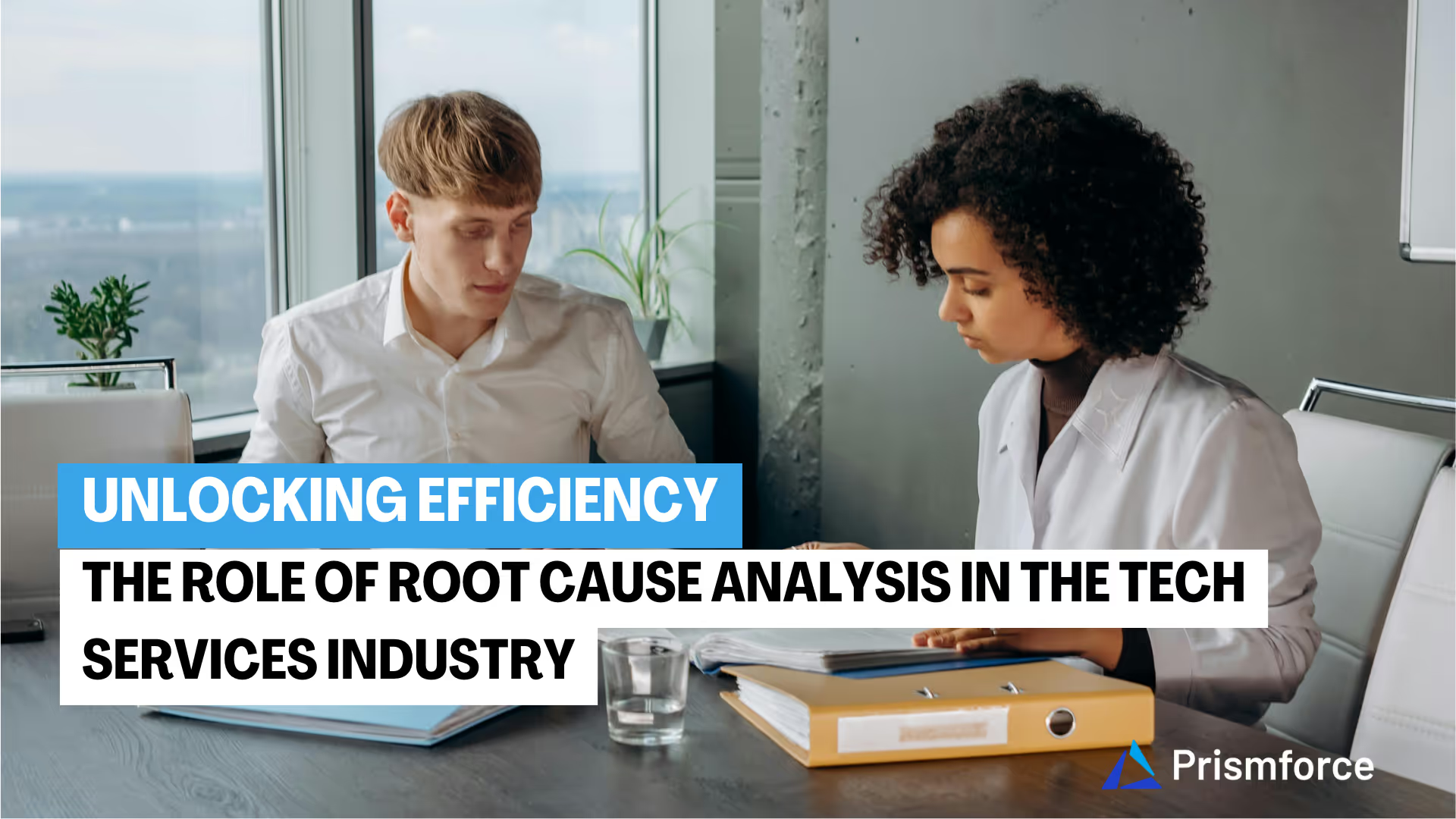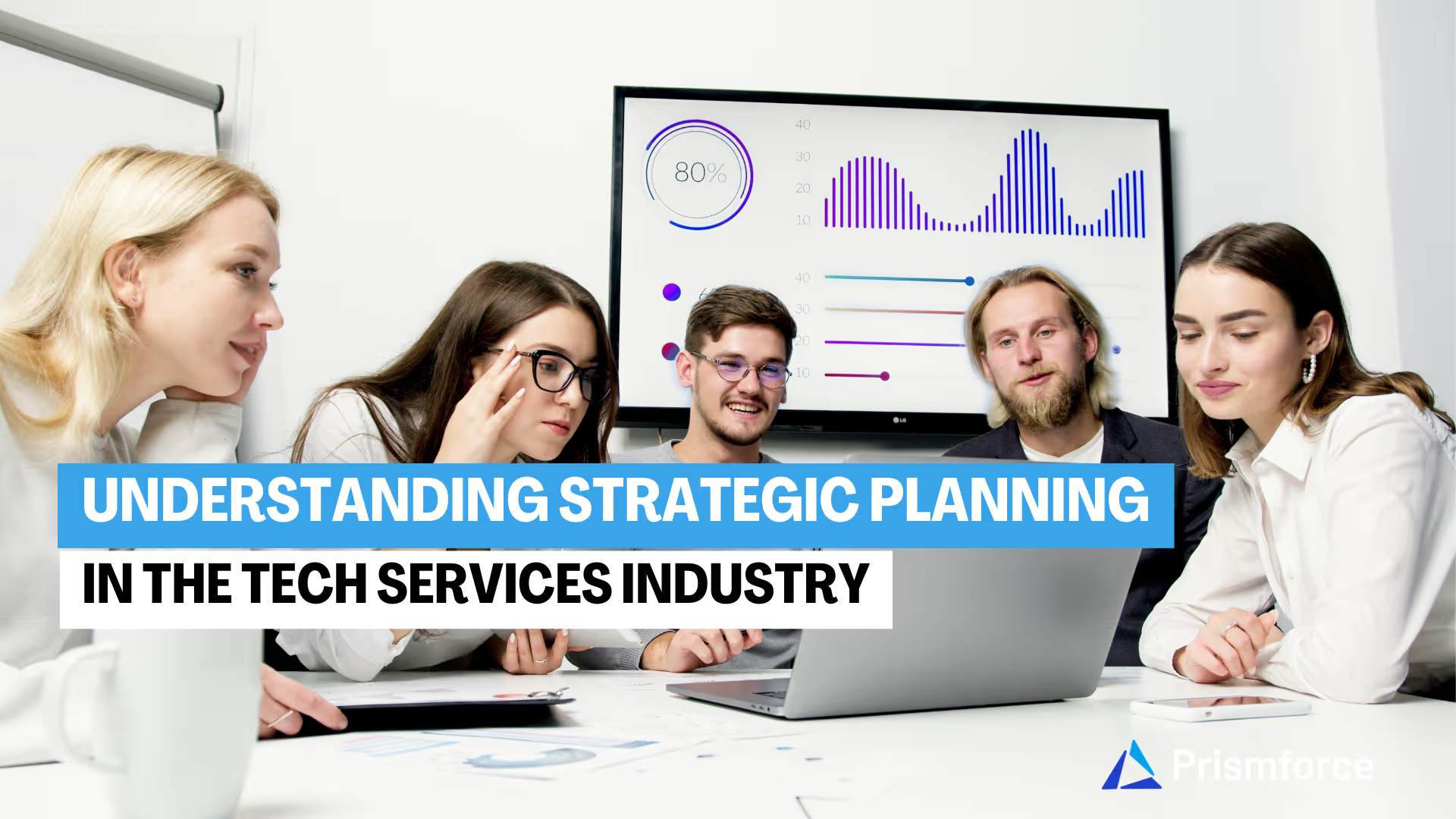
The future of work is being written right now—and forward-thinking organizations are leading the transformation with skills intelligence.
Imagine having complete visibility into your workforce's capabilities in real time. Picture being able to match the right talent to the right opportunity instantly, predict future skill needs before they become urgent, and create personalized career pathways that energize your people while driving business results.
This isn't a distant vision. It's happening today through skills intelligence—a revolutionary approach that helps organizations identify, develop, and deploy talent based on dynamic, validated capabilities rather than static job titles.
The opportunity is massive. Organizations embracing skills-first strategies are seeing remarkable results: 12% improvement in hiring quality, 30% faster internal staffing, 25% reduced turnover, and 80% higher internal promotion rates. They're unlocking hidden capabilities, accelerating growth, and building workforces that adapt and thrive in changing markets.
As we move toward 2025, the organizations winning the talent race aren't those with the biggest recruiting budgets—they're the ones who truly understand what their people can do and strategically develop those capabilities for tomorrow's opportunities.
What Is Skills Intelligence?
Skills intelligence is the strategic process of gathering, analyzing, and applying real-time data on employee capabilities to optimize workforce planning, talent development, and business performance.
Think of it as a living, breathing map of what your people can do—not just their current capabilities, but how those skills connect, potential growth pathways, and how they can be leveraged for future success.
Rather than relying on annual reviews and self-reported resumes, skills intelligence harnesses the power of AI, machine learning, and data analytics to create dynamic skill profiles from multiple sources: resumes, project histories, learning platforms, performance data, and internal collaboration tools.
A robust skills intelligence framework includes four core components:
- Skills Taxonomy: A comprehensive, standardized classification system that defines and categorizes skills relevant to your organization's operations and strategic objectives
- Skills Assessment: Robust mechanisms for evaluating and documenting employee capabilities through self-assessments, peer evaluations, performance data, and objective testing
- Skills Analytics: Advanced data analytics and machine learning techniques that derive actionable insights, enabling predictive modeling and strategic workforce planning
- Skills Inventory: A real-time database capturing employee skills across the organization, continuously updated and validated
The Opportunity: Why 2025 Is Your Transformation Moment
The potential for transformation has never been greater, and the numbers tell an exciting story:
General AI (GenAI) is projected to add between $2.6 and $4.4 trillion annually in productivity value across various industries. Organizations can potentially enhance employee productivity by up to 34% through strategic AI adoption.
The workforce landscape is evolving rapidly, creating unprecedented opportunities:
- 58% of employees anticipate their job requirements will expand significantly within five years (World Economic Forum)
- 81% of employers now prioritize skills-based hiring, up from just 56% in recent years (The State of Skills-Based Hiring Report)
- Organizations with structured skills approaches are 79% more likely to provide a positive employee experience (Deloitte) and 63% more likely to meet or exceed business objectives
The transformation potential is real and measurable:
- Companies with skills intelligence see 12% improved hiring quality, aligning talent more precisely with organizational needs
- Organizations leveraging skills-based internal talent marketplaces experience 80% higher internal promotion rates and 25% reduced turnover
- 94% of employees would stay longer at companies that invest in their development (LinkedIn Learning Workplace Learning Report 2022)
The message is clear: organizations embracing skills-based talent strategies are positioning themselves to lead in an era of unprecedented opportunity. The future belongs to companies that deeply understand their workforce at the skills level and use that insight to unlock potential.
The Evolution: From Traditional to Transformational
The shift from traditional workforce planning to skills intelligence represents a fundamental evolution in how organizations think about talent.
Moving Beyond Static Profiles
Annual reviews and point-in-time assessments are giving way to dynamic, continuously updated skill profiles. Employees develop new competencies constantly—with every project, every collaboration, every learning experience. Modern skills intelligence captures this evolution in real time, providing leaders with current, accurate insights for decision-making.
Creating Unified Visibility
Rather than having skills data scattered across learning systems, project tools, and HR platforms, skills intelligence creates a single, comprehensive view. This unified approach enables faster, more confident decisions about talent deployment, development, and planning.
Embracing Dynamic Taxonomies
While traditional skill hierarchies required manual updates and often lagged behind market changes, modern systems leverage AI to automatically identify emerging skills and evolving competencies. This means organizations can stay ahead of trends—recognizing new roles like AI prompt engineer or FinOps specialist as they emerge.
Building Cross-Functional Alignment
Skills intelligence transcends traditional HR boundaries, becoming a strategic tool for leaders across the organization. When engineering, delivery, learning & development, and business teams align around a shared understanding of capabilities, collaboration accelerates and innovation flourishes.
The Business Value: Measurable Impact Across Every Dimension
Organizations embracing skills intelligence are achieving transformative results across every aspect of talent management:
Recruitment and Talent Acquisition Excellence
Skills-first hiring strategies have improved hiring quality by 12%, enabling organizations to align talent more precisely with needs. By focusing on capabilities rather than credentials alone, companies can expand their candidate pools by up to ten times, accessing previously untapped talent.
Even better, 84% of candidates view skills-based approaches as more equitable and inclusive—creating not just larger talent pools, but higher-quality, more diverse ones.
Accelerated Internal Mobility and Engagement
The engagement and retention benefits are remarkable. 94% of employees would stay longer at companies that invest in their development (LinkedIn Learning Workplace Learning Report 2022). Organizations leveraging skills intelligence for internal talent marketplaces experience 80% higher internal promotion rates and 25% reduced turnover.
Employees with clear, skills-based career paths are twice as likely to stay (LinkedIn 2022 Global Talent Trends Report)—and skills intelligence makes those paths visible, achievable, and exciting.
Operational Excellence and Efficiency
Real-world implementations demonstrate concrete gains:
- ~30% faster internal staffing cycles, accelerating project launches and improving responsiveness
- 6% slower headcount growth by maximizing internal talent before hiring externally
- 2-5× increase in skill discoverability, enabling faster decision-making and optimal team composition
- 5M+ unique skills uncovered across organizations, revealing hidden capabilities and potential
Strategic Learning and Development
Skills intelligence transforms L&D into a strategic driver of business value. By analyzing job profiles and skills progression, organizations can design targeted development programs that enhance ROI while ensuring employees acquire capabilities that directly support business objectives.
AI-driven recommendations for learning resources create personalized career pathways that drive both individual growth and organizational performance, making development investments more effective and engaging.
Building Your Skills Intelligence Strategy: A Practical Blueprint
Creating a skills intelligence framework is a strategic journey with clear, actionable steps:
1. Create a Skills Taxonomy That Works
Start by establishing a common language around skills. Your taxonomy acts as the foundation for your entire framework—defining what counts as a skill, how skills relate to one another, and providing shared understanding across your organization.
Characteristics of effective taxonomies:
- Specific: Tailored to your industry, business model, and strategic goals
- Comprehensive: Covers both technical (hard) and behavioral (soft) skills
- Flexible: Designed to evolve as technologies and job roles change
- Market-aligned: Connected with external market data to maintain competitive relevance
Best practice: Ensure each skill has clear, specific definitions, and update the taxonomy regularly to reflect emerging roles and industry trends.
2. Build Your Skills Inventory
Once your taxonomy is established, capture your current capabilities. Your skills inventory brings together employee skills from multiple sources:
- Self-assessments: Employees document their own capabilities
- Manager evaluations: Supervisors provide validation and context
- Performance reviews: Historic data on outcomes and achievements
- Certifications and training records: Proof of acquired competencies
- Project histories: Real-world examples of skill application
Leverage AI-based tools to auto-extract skills from resumes, project management systems, and learning platforms—dramatically accelerating the inventory-building process while improving accuracy.
3. Validate With Objective Assessment
Transform claims into verified capabilities. Work with subject matter experts to:
- Create practical tests that measure real-world application
- Pilot assessments with top performers to establish benchmarks
- Continuously refine validation tools for accuracy and relevance
Strong validation builds trust in the data, improves hiring decisions, and accelerates internal mobility by making skill profiles reliable and actionable.
4. Transform Data Into Strategic Insights
Skills data becomes powerful when you turn it into actionable intelligence:
- Gap analysis: Identify high-priority development areas
- Forecasting: Determine which emerging skills will drive competitive advantage
- Visualization: Map skill distribution across teams, departments, and geographies
- Progress tracking: Celebrate skill development milestones over time
Use intuitive dashboards and dynamic reporting tools to make skills insights accessible and actionable for leaders, managers, and employees alike.
5. Integrate Across All Talent Processes
Skills intelligence delivers maximum value when embedded throughout your talent ecosystem:
- Recruitment: Match candidates to current and future skill needs
- Learning & Development: Design personalized, impactful upskilling pathways
- Performance Management: Recognize and reward skills growth and application
- Workforce Planning: Anticipate talent needs proactively and optimize internal deployment
- Succession Planning: Identify and develop future leaders based on capability trajectories
When skills data flows seamlessly across these processes, you create an agile, high-performing workforce ready for whatever comes next.
Key Features of Modern Skills Intelligence Platforms
Leading skills intelligence platforms are empowering organizations with comprehensive, AI-driven capabilities:
AI-Powered Talent Optimization
- Intelligent Matching: Advanced tools for sourcing, internal talent matching, and succession planning that ensure optimal talent deployment
- Real-Time Analytics: AI analyzes performance data continuously, surfacing actionable insights that help managers and HR professionals guide teams effectively
- Predictive Modeling: By analyzing historical data and incorporating external factors like industry trends and market dynamics, systems forecast future skill demands and inform strategic planning
Enhanced Employee Experience
- Personalized Development: AI-driven recommendations for opportunities and learning resources that create compelling career pathways
- Career Pathway Visibility: Clear guidance for managers on optimizing engagement, plus transparent career possibilities for employees
- Streamlined Onboarding: AI-powered platforms recommend role-specific resources and set achievable goals, creating positive first experiences
Data-Driven Excellence
- Skills Gap Analysis: Streamlined identification of development opportunities, enabling strategic career pathways and succession planning
- Engagement Insights: Platforms collect feedback and analyze data to enhance engagement strategies continuously
- Automated Skill Discovery: Natural language processing automatically extracts and categorizes skills from job descriptions, resumes, and project documentation
- Intelligent Clustering: Machine learning algorithms identify patterns and relationships between skills, revealing adjacencies and career possibilities
Maximizing Your Skills Intelligence Implementation
Strategic implementation ensures you capture the full value of skills intelligence:
Building Organizational Enthusiasm
Most people embrace change when they understand the benefits.
Approach:
- Communicate clear, personal benefits for individuals and teams
- Involve employees from day one in shaping the initiative
- Start with pilot programs that generate quick wins and momentum
- Ensure visible leadership support and active sponsorship
Ensuring Data Quality and Trust
High-quality, consistent data enables confident decision-making.
Approach:
- Standardize data collection and skills assessments
- Establish clear data governance policies
- Invest in integrated platforms that seamlessly pull data from multiple sources (PwC 2021 HR Technology Survey)
- Implement continuous validation processes that maintain accuracy
Creating Cross-Functional Alignment
Skills intelligence creates value across the entire organization when stakeholders collaborate.
Approach:
- Position skills intelligence as a strategic business enabler
- Align stakeholders around shared outcomes and mutual benefits
- Celebrate and share success stories across departments
- Establish cross-functional steering committees that drive adoption
Future Trends: What's Coming Next
The future of skills intelligence is filled with exciting possibilities as technology and workforce strategies continue to evolve:
High-Value Technical Capabilities
- AI and Machine Learning: Mastery is becoming essential as organizations leverage these technologies for innovation, customer service, and operational excellence
- Cybersecurity: Expertise in protecting digital assets creates competitive advantage as digital transformation accelerates
- Data Science: The ability to extract insights from vast datasets drives better decision-making and innovation
- Cloud Computing: Knowledge in AWS, Azure, or Google Cloud enables scalability, flexibility, and operational efficiency
Emerging Technology Opportunities
- 5G Networks: Adoption is set to dramatically increase network speeds, creating new possibilities for service delivery
- Hybrid/Multicloud Management: 70% of companies are expected to leverage these technologies by 2025 (McKinsey), creating demand for specialized expertise
- Low-Code Development: The market for low-code platforms is growing rapidly, democratizing application development and accelerating innovation
The Growing Value of Human-Centric Skills
As automation handles routine tasks, uniquely human capabilities become increasingly valuable:
- Emotional Intelligence: Essential for building strong teams and driving collaboration
- Critical Thinking: Key for solving complex problems and driving innovation
- Communication: Crucial for remote collaboration and cross-functional success
- Adaptability: The ability to learn and evolve quickly becomes a core competitive advantage
Autonomous Skills Intelligence
The next wave brings even more powerful capabilities. Advanced AI will surface optimal talent matches instantly, recommend best-fit allocations, and enable seamless staffing workflows—turning skills data into immediate business value.
Conversational AI agents will proactively support employees—suggesting relevant opportunities, recommending skill development, and streamlining profile updates through intuitive chat and voice interfaces.
Measuring Success: Demonstrating Impact
Showcase the value of your skills intelligence initiative by tracking meaningful metrics:
Individual Growth Indicators
- Learning Velocity: How rapidly employees acquire new capabilities
- Skills Development: Expansion of competencies over time
- Application Success: How effectively employees leverage new skills in real work
- Career Progression: Movement along defined skill-based career pathways
Business Impact Measures
- Employee Retention: Engagement and retention rates for employees with active development plans
- Internal Mobility: Talent successfully moving across roles and departments based on skills
- Time-to-Fill Reduction: Faster project staffing through internal deployment
- Performance Gains: Measurable improvements in productivity and quality linked to capability development
- Strategic ROI: Value created through reduced external hiring and accelerated project delivery
Most Powerful Evidence: Showcase specific examples where strategic skills intelligence directly enabled business wins—from faster product launches to market expansion powered by newly developed capabilities.
Leading the Skills Revolution
Organizations that understand and strategically manage their workforce at the skill level are positioning themselves to lead in an era of unprecedented opportunity.
Skills intelligence transforms workforce management from reactive to proactive, from static to dynamic, from constrained to unlimited. Instead of responding to gaps as they emerge, you'll anticipate needs and develop capabilities that create competitive advantage.
The future belongs to companies that:
- See the complete picture through real-time, validated skills data
- Anticipate tomorrow's needs using AI-powered forecasting and market intelligence
- Develop strategically with targeted, personalized learning pathways
- Deploy optimally through intelligent matching and internal mobility
This isn't just about keeping pace with change—it's about leading it. It's about unlocking the full potential of your workforce and creating a culture where growth, opportunity, and innovation thrive.
The skills intelligence revolution is creating unprecedented opportunity. The future is being built by those who can see, develop, and deploy talent with precision and purpose. Will your organization lead the way?
Ready to unlock your workforce's full potential with skills intelligence? Discover how leading enterprises are turning capabilities into competitive advantage and building workforces ready for whatever comes next.


.avif)


